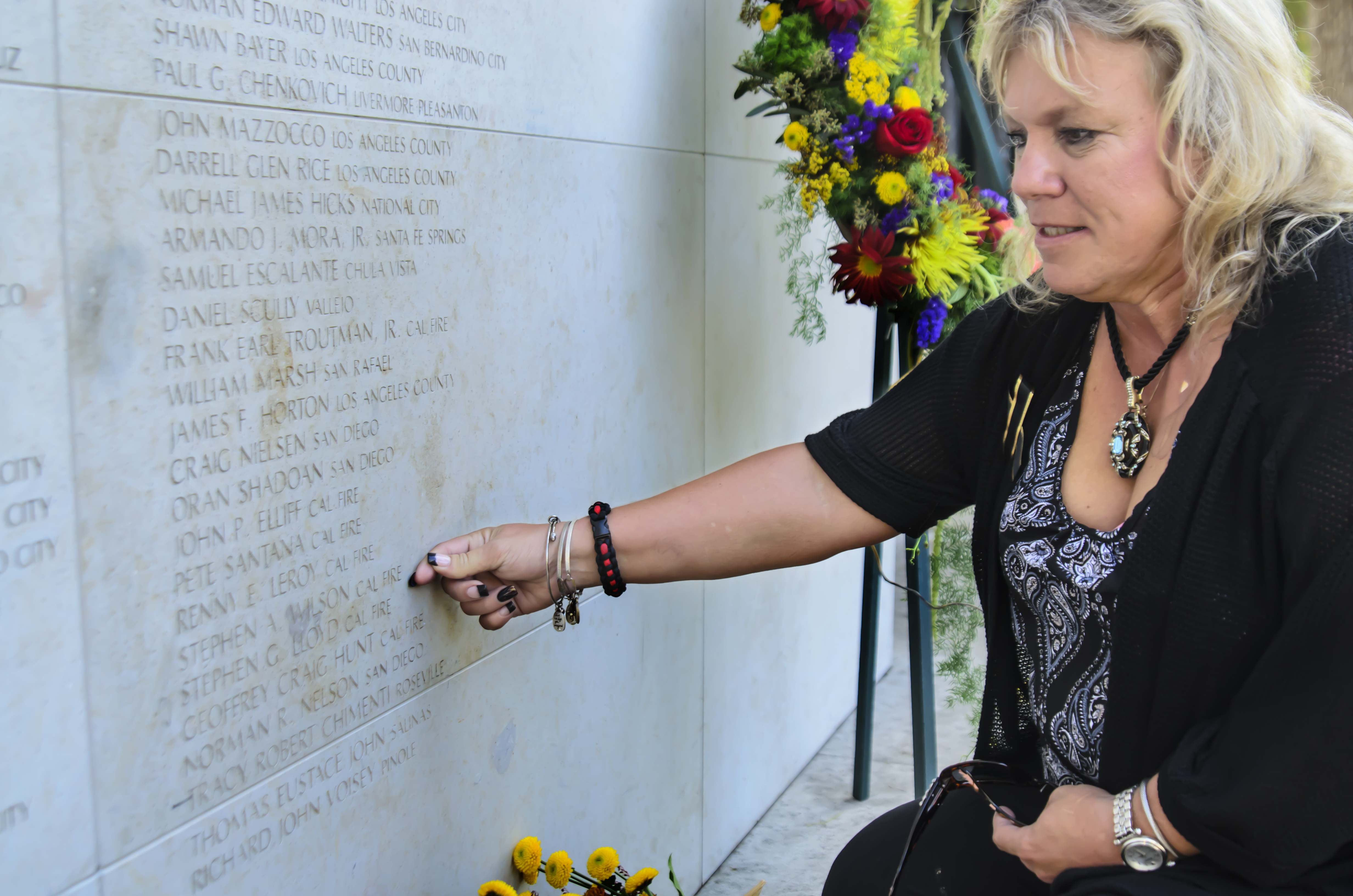Sacramento’s Firefighter Memorial bears over 1,300 names of the men and women who have lost their lives protecting their fellow Californians. Annette’s husband passed away in April of 2014 from a heart attack; she fought for months for his death to be classified as job related. The investigation concluded the heart attack was induced from exposure at a fire days before his passing and Steve became eligible to be added to the wall. In October 2014 his name, STEPHEN A. WILSON, CAL FIRE, was added to the memorial wall. As the ceremony commenced, clouds lined the sky and rain fell with the many tears of those who gathered to honor the fallen. Each honoree’s family was presented a folded flag; children, parents, partners, and fellow firefighters received the sentiment to the lost, and the pain was evident wherever you stood. Annette already rubbed a copy of his etched name after the ceremony, but she was having trouble leaving his name and his memory. She pointed to his name and gritted her teeth while telling me about him I snapped this photo.
What binds those still living together? Those left behind are the legacy of the lost, giving them a link to each other. No matter what heroics lead to the demise of those lost, whether they were civilians, first responders, or part of the armed forces; memorials like this immortalize their sacrifice. Elisabeth Kübler-Ross (1969) helped popularize death – and how the living make sense of it – as a research topic. The well-known five stages of coping have helped many understand what will come to everyone. Once we accept our fate, we can focus our time and energy on living a good meaningful life. Steve and numerous others risked their lives in service of the people of California, and we honor those who made the ultimate sacrifice. The last of the stages is acceptance: we can preserve the memory of those who have died by accepting the loss, and use the memory of their sacrifice to connect our lives to theirs. When Halbwachs (1969) studied the social context of memory recall, he found that once enough people in a group forget an event, the memory is lost entirely. This is connected to the ideas in the Mexican celebration of the Day of the Dead, where visiting the sites of commemoration and leaving offerings keeps loved ones in the “Land of the Remembered”, but those who have no one to remember them go to the “Land of the Forgotten”. For Annette and others who gathered there, the Firefighter’s Memorial serves this purpose, while others instantly recognize the WWII memorial statue and more recently the 9/11 memorial in New York.
Berger (1967) describes theodicy, the social necessity to make sense and meaning out of chaos and evil. The heroes of disasters are commemorated to give society the frame it needs to continue. The memorials serve as closure and helps shift the event from a horrid tragedy to another uniting scar that we survived together. This year alone California has seen some of its most destructive fires, destroying over a million acres of land, homes, and claiming multiple lives. These areas of high-fire-risk lead to an increase in need of risky occupations and then a need to once again commemorate the brave lost in the fight.

Commentary on Rachel Tanur's Works: New Orleans Balcony